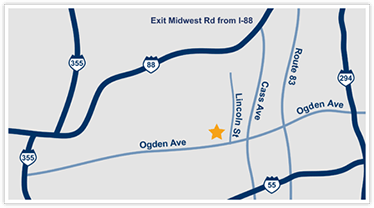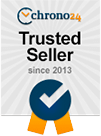How to Start Coin Collecting
If you’re looking for a fun hobby, consider coin collecting. People around the world enjoy building their collections with coins that have unique designs or interesting stories connected to them. The hobby can even come with financial incentives because some collections sell for millions of dollars. Fortunately, those who want to experience the personal fulfillment of coin collecting often find it easy to get started. Here are a few tips that’ll help you build a beautiful collection that you can one day sell or pass on to your children or grandchildren.
How Do You Start Collecting?

Coin collecting can be intimidating, but you don’t have to know anything about the hobby to get started. Instead of trying to find the most valuable coins from the get-go, focus on what piques your interest. You can set aside ones that have unique colors and patterns or ones with which you have an emotional attachment.
An easy way to start is by making your purchases in cash and sorting through the change. You can also follow the lead of many coin collectors by sorting through coin rolls you buy at the bank. This method is particularly effective for finding error coins that entered circulation despite defects that occurred during minting.
How Can You Buy Coins?
The best way to start buying coins is by visiting a coin show or a local coin dealer. These establishments have experts who set fair prices and are willing to educate you as you start your coin-collecting journey. You can also buy sets from mints that’ll give you multiple verified coins related to a theme. Be careful if you buy coins online or from other collectors because it may be challenging to verify the prices are consistent with the coin’s intrinsic value.
These methods are perfect for those new to this hobby because they essentially involve you exchanging money for coins of the same value. As you become more invested in coin collecting, you’ll likely have to pay for a coin’s intrinsic value instead of its face value. The intrinsic value is how much the coin is worth based on factors like age, condition, precious metal content, and mintage. By paying for coins instead of relying on luck, you can obtain coins that are most interesting to you and increase the value of your collection.
What’s the Common Lingo?
As you attend coin shows or talk to local coin dealers, it might seem like they’re speaking another language. The experts are usually more than willing to educate you on the lingo, but reviewing the terms beforehand can help you feel more comfortable and focus on learning about the coins themselves. For instance, here are some coin anatomy terms that you might want to brush up on:
- Edge: The edge, or the “third side,” is the outer border of a coin and can be plain or serrated.
- Field: The field is the background or the flat part of the coin.
- Obverse: The obverse is the front side of the coin that usually depicts the head of a prominent person or the country’s emblem.
- Relief: The relief is the raised or 3D image that sits on top of the field.
- Reverse: The reverse is the back of the coin that usually depicts the chosen design.
- Rim: The rim is the raised portion around the perimeter of a coin.
You should also familiarize yourself with the Sheldon Coin Grading Scale. In 1949, Dr. William Herbert Sheldon developed this system that was slightly modified in the 1970s. This scale assigns coins a number 1 through 70, with scores closer to 70 representing high-value coins in excellent condition. The score also features one to two letters that provide additional information.
Where To Start?
A simple starter kit can motivate you as you begin your coin-collecting journey. One essential to include is a magnifying glass with at least 7x magnification, so you can clearly see a coin’s details. With this tool, you can develop a greater appreciation for features the average person doesn’t notice.
You might also want to invest in a high-quality storage container, cotton gloves, and a reference book. Additionally, consider using a notebook to log information about every item in your collection. As your collection grows, you might switch to software that’ll help you better manage hundreds or even thousands of coins.
What’s Your Collection Type?
As you build your collection, you’ll likely notice a theme. Some people find themselves searching for coins with a particular design like flowers, animals, or pop culture references. Others might prefer coins that were minted during a timeframe related to a historical event. Your collection could even be centered on coins made of certain metals. Defining your collection type can make it easier to organize and look for other pieces to add.
How Can You Protect Your Coins?
Because you can spend a lot of time and money searching for coins, it’s important to protect your collection. You may use acid-free paper envelopes to collect coins of lower value. If you have high-value coins, the storage container you use should be weatherproof to protect against everyday humidity and severe scenarios like flooding. You might even want to consider insurance for particularly expensive collections.
Regardless of how expensive your collection is, you should never clean your coins. Chemicals and scrubbing can remove parts of the metal or leave microscopic scratches. Even if a coin has grime or significant signs of aging, it’s best to leave it in its original condition to preserve its value.
What Other Safety Measures Are There?
As for handling, ensure you always wear cotton gloves and use your thumb and forefinger to pick up coins by their edges. You should avoid plastic and latex gloves because their lubricants and powders can lead to damage. If you’re worried about dropping a coin while handling it, lay down a thick towel to protect against scratches and dents. It’s also important to limit how much you talk as you handle a coin. Many collectors don’t realize that nearly invisible drops of saliva can lead to permanent water spots.
As you can see, coin collecting isn’t the exclusive hobby many people make it out to be. You can get started with little knowledge and learn along the way. If you want expert help as you delve into this hobby or are looking to purchase from a reputable dealer, contact us today. Our team here at Americash Jewelry and Coin Buyers is eager to match you with collectibles ranging from rare U.S. silver coins to Morgan and Peace dollars.
Image via Flickr by MShades | Licensed by CC BY-ND 2.0
Tags: Coin Collecting, How To



